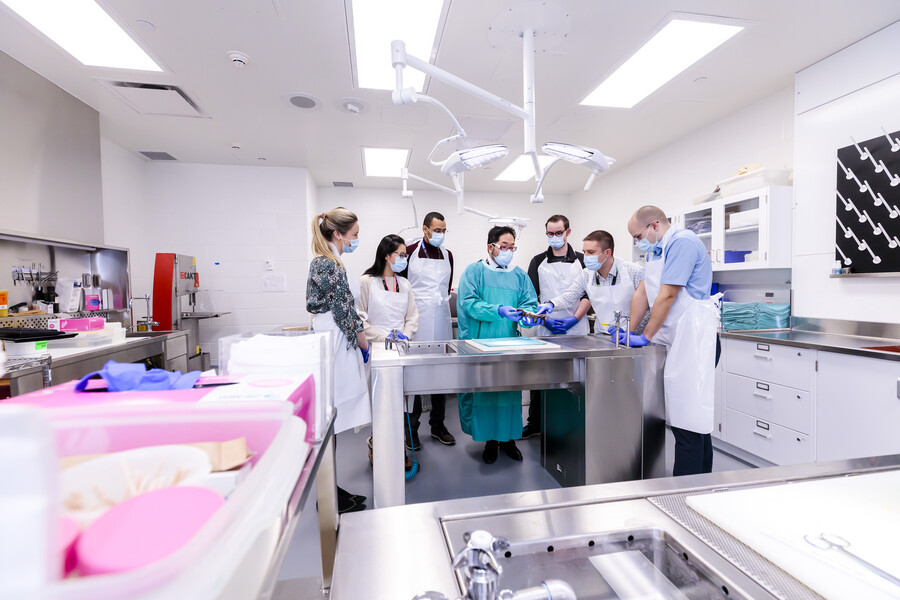Case of the Month: May 2023
Clinical history
A 23 year old male patient presented to his family doctor after noticing his left hemiscrotum was enlarged compared to the right. The scrotum was non-tender and there was never any pain, dysuria, or urethral discharge. A scrotal ultrasound showed an enlarged left testis that was nearly completely replaced by a large, lobulated, irregular, heterogeneous solid mass with internal and peripheral vascularity. A radical orchiectomy was performed.
How to participate
Take a look at the H&E images of this patient’s testicular tumour.
Anyone is welcome to try to solve the puzzle by commenting on the related post on our Instagram.
If you are a medical student at the University of Toronto, you can also:
If you do, you are in for a chance to win a $100 gift card! (UofT Med students only).







Discover the answer to May's case of the month!
The answer to the May Case of the Month is Mixed Germ Cell Tumour with teratoma, yolk sac tumour, embryonal carcinoma, and choriocarcinoma components. Mixed germ cell tumours account for the majority of non-seminomatous tumours and are composed of a combination of tumour types including teratoma, yolk sac tumour, embryonal carcinoma, choriocarcinoma, and seminoma, all of which derive from germ cell neoplasia in situ. The average patient age at presentation is 30 years. In addition to the clinical findings of a testicular mass, patients may have elevated serum tumour markers such as LDH (general tumour marker), alpha-fetoprotein (yolk sac tumour marker), and human chorionic gonadotropin (hCG, trophoblastic tumour marker). On gross examination of the tumour after surgery, tumours can have a variegated appearance depending on the presence of different components (can be a mix of solid white to grey areas, necrosis, hemorrhage, and cystic change). The surgical pathology is used to determine the tumour composition and pathological stage, which will then be combined with medical imaging and serum tumour markers to determine the overall clinical stage of the tumour and treatment approach.
If you are a current medical student at U of T, you can register to join the May case of the month lecture online or in person and have a chance to win a $100 gift card!
If you’re a medical student at the University of Toronto interested in Laboratory Medicine join the Special Interest Group in Laboratory Medicine to be invited to a case of the month lecture (catered).
Laboratory Medicine and the study of disease for medical students

